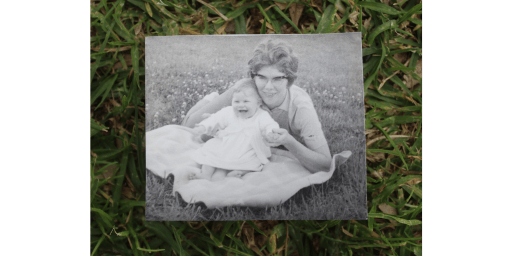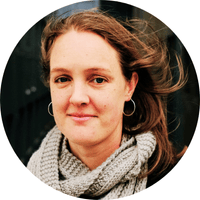Community development worker Robyn Szechtman tells her St Kilda story
In the park beside the National Theatre stands The Great Wall of St Kilda. A patchwork of ceramic tiles, the central mural shows our eclectic suburb: palm trees, Palais, pier and people all presided over by Bunjil the eagle. Around the outside, 600 smaller tiles were designed by members of the local community. Bright and inviting, passersby often stop to stare up at the Wall, examining its detail.
The close observer may notice the name Robyn Szechtman painted on a tile. In 2010, Robyn, then a community development worker with Port Phillip council, teamed up with artist Camille Monet to bring the wall to reality. “Talbot Reserve was redesigned in the mid-2000s,” she tells me, “which did unfortunately design homeless people, sex workers and drug users out of it. We felt that the Wall was a tribute to the whole range of people that make up our community.”
Tiles were designed at rooming houses, the Gasworks, Vegout Gardens and local festivals. “Camille would just bring clay, and groups of people would sit there and make a tile,” she says, “and in that, people would talk to each other – people that would never normally talk to each other.”
Bringing people together is a passion of Robyn’s, who has lived in St Kilda her entire life. In a career spanning prisons, council and now the Voices of the Southside project, she believes in connecting people from different sections of society. “There are a lot of really lonely people out there that don’t need to be,” she says. Whether that isolation is due to a lack of money, social skills, the death of a partner or the online transformation, Robyn has seen firsthand that “people want to connect” but sometimes need help to do so in positive ways.
Art, she says, “is a fabulous way of bringing people together, cause when you’re working on something, and people are sitting there talking and absorbed in what they’re doing, they’re working towards a greater good.” If she had unlimited dollars to spend in St Kilda, Robyn would establish “a lot more programs that connect people up, and not just marginalised groups.” Community development, she says, “is always one of the first things to go when it’s difficult times, but it’s actually when it’s really important. Because creating a community goes a long way towards solving other problems as well.”
And she would know. Born on Barkly Street, her parents – mother Norma from Port Pirie, father Sam from Warsaw via a Siberian Russian labour camp – ran milk bars, and though their work took the young Robyn as far as Sunshine, Mentone and Ripponlea, it was always St Kilda she returned to. “My grandparents lived in Hawsleigh Avenue off Carlisle Street,” she tells me, “so we would have our holidays in St Kilda. I still feel it’s like a seaside town that you visit, and I don’t ever want to lose that.”

She remembers visiting her mother at work in a deli on Acland Street, eating cakes and clomping down Carlisle Street on her stilts. Her father would take her to play table tennis in Albert Park, then to Leo’s on Fitzroy Street for ice-cream – “they used to make their own gelati which was amazing.” St Kilda was the suburb of her childhood, and with its diverse mix of people, a place where the family felt comfortable.
After school, Robyn, drawn towards listening to people, considered going into hairdressing, but when a salon placement established that she couldn’t cut straight, she enrolled in Behavioural Sciences and got a part-time job selling flowers in the Coles arcade on Carlisle Street. It was there she got to know all the local characters: the woman who wheeled a huge toy rabbit in a pram, the man who set all the alarm clocks in the supermarket to ring at the same time. She recalls a man known as The Wizard walking around in full Gandalf get-up – “he got beaten up once at St Kilda Festival, really quite badly, and that was distressing.” She hopes that St Kilda can still be a place where people feel safe to express themselves freely.
“There will be no other place that feels quite like home in the way St Kilda does,” says Robyn, when I ask if she’ll ever move. “And I would miss the sea.” Her and her dog, Arlo, can often be found down at St Kilda West beach; she loves its wildness and “all the little boats bobbing up and down.” St Kilda Pier is another spot important to her personal history: “I’ve walked up and down there so many times with so many different people at different times of my life.” But besides its physical beauty, it’s St Kilda’s generous spirit that she cherishes. “The other day I was walking up Pakington Street, and a young woman was staggering down the middle of the road with a red futon,” she tells me. “A car pulled up next to her, with roof racks. The driver got out and said, ‘Do you need help with that?’ And together they put the futon on the roof racks, tied it up and sped off. I’ll never know what happened, but I just thought, ‘I love St Kilda’. That to me is the epitome of the generosity of residents towards each other. Which is gorgeous.”

Storyteller: Isabel Robinson is a Melbourne writer and community development worker. Her words have been published in The Age, The Guardian and The Victorian Writer and she is currently working on a novel for middle grade readers with her husband, Stephen Sholl. She manages the City of Voices inclusive theatre group and lives in St Kilda. www.isabelrobinson.net







